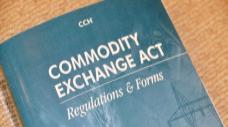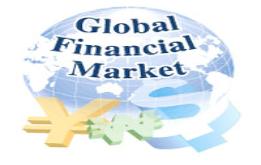



Agricultural Options offers market participants the flexibility they need for effective risk management, as well as the ability to
execute volatility strategies or event-driven trades. Our portfolio of Grain, Oilseed, Livestock, and Dairy products provides an array of
opportunities from outright and spread options, including Calendar and Intercommodity Spread Options, to short-term alternatives
execute volatility strategies or event-driven trades. Our portfolio of Grain, Oilseed, Livestock, and Dairy products provides an array of
opportunities from outright and spread options, including Calendar and Intercommodity Spread Options, to short-term alternatives

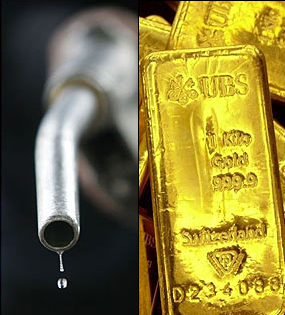
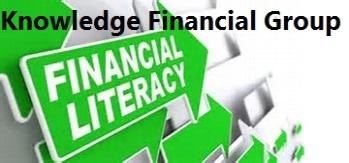
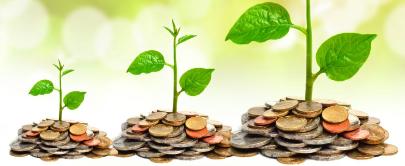
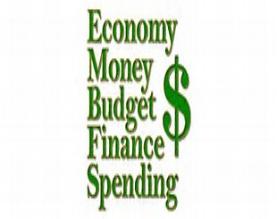
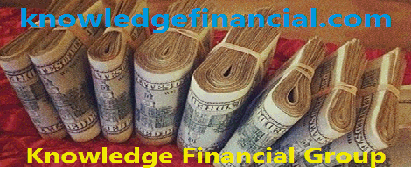


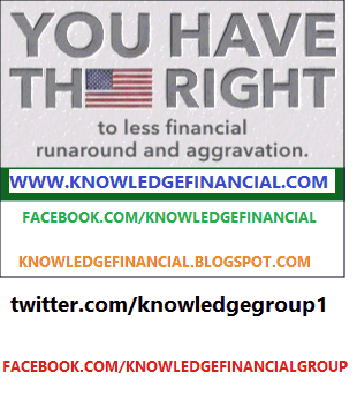
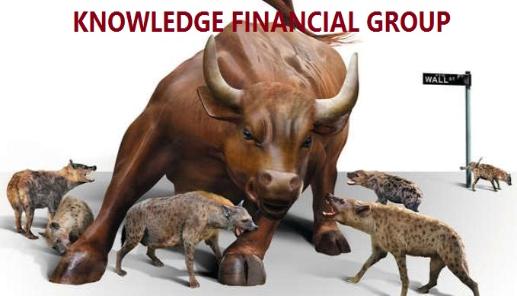
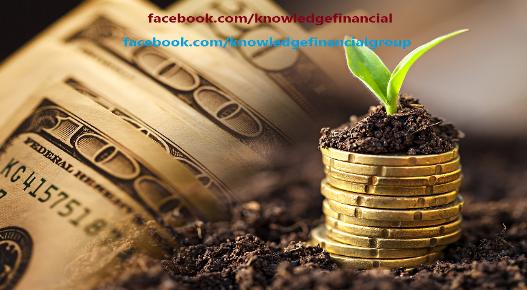
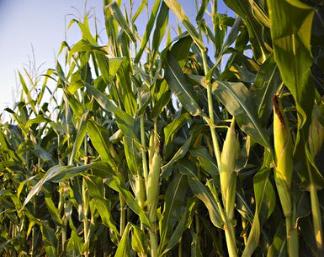
Trading corn futures can be fairly subdued
during the winter months, while the summer
months are not for the faint of heart.
Corn is planted in the spring and harvested in the fall. This
growing season is when most of the action in corn prices take
place.
The winter months usually deal with demand and how much of the
harvested crop is sold on a weekly basis.
The summer months often have a barrage of weather problems
that can keep corn traders on edge with every updated weather
report.
United States (39 percent of world production)
Planting: Corn crops are planted beginning in April and last into
June.
Harvest: Corn is mainly harvested in October and is finished by
the end of November.
China (21 percent of world production)
Planting: Corn is planted in mid-March through early June.
Harvest: August through October.
European Union (8 percent of world production)
Planting: Mid-April through early June.
during the winter months, while the summer
months are not for the faint of heart.
Corn is planted in the spring and harvested in the fall. This
growing season is when most of the action in corn prices take
place.
The winter months usually deal with demand and how much of the
harvested crop is sold on a weekly basis.
The summer months often have a barrage of weather problems
that can keep corn traders on edge with every updated weather
report.
United States (39 percent of world production)
Planting: Corn crops are planted beginning in April and last into
June.
Harvest: Corn is mainly harvested in October and is finished by
the end of November.
China (21 percent of world production)
Planting: Corn is planted in mid-March through early June.
Harvest: August through October.
European Union (8 percent of world production)
Planting: Mid-April through early June.
How to Report Commodities
on a Tax Return
Commodities futures are a bet on whether a
product such as orange juice, beef or wheat
will rise in price.
Investors take out a contract to buy or sell
commodities at a preset price and date. When
the date rolls around, a buy contract that lets
you invest below the market price is a winner.
If the market price is lower than your contract
price, you lose.
You report the results as a capital gain or loss.
Gains and Losses
Contracts are a zero sum game -- for every buy
contract, there's also a seller. When you
complete the contract transaction, you report
any profits as capital gains on IRS Schedule D.
Losses go on the same form. You write off
losses against capital gains from other
transactions. If you have a net capital loss, you
deduct up to $3,000 as of 2014 -- $1,500 if
married but filing separately -- from your
non-capital income. You carry over the rest of
the loss to next year.
on a Tax Return
Commodities futures are a bet on whether a
product such as orange juice, beef or wheat
will rise in price.
Investors take out a contract to buy or sell
commodities at a preset price and date. When
the date rolls around, a buy contract that lets
you invest below the market price is a winner.
If the market price is lower than your contract
price, you lose.
You report the results as a capital gain or loss.
Gains and Losses
Contracts are a zero sum game -- for every buy
contract, there's also a seller. When you
complete the contract transaction, you report
any profits as capital gains on IRS Schedule D.
Losses go on the same form. You write off
losses against capital gains from other
transactions. If you have a net capital loss, you
deduct up to $3,000 as of 2014 -- $1,500 if
married but filing separately -- from your
non-capital income. You carry over the rest of
the loss to next year.
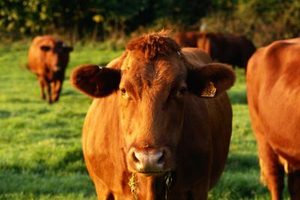
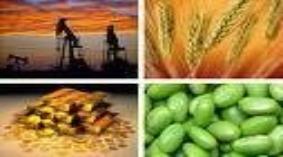
How Does Commodity Trading Work?
Commodity Trading
Commodities within financial trading include the trading of physical
goods or raw products. These goods and products include various
foods, livestock, fuel, as well as precious and industrial metals that are
exchanged and traded. Commodities are like trading cash or stock.
Basically, with commodity trading you are making a bet on the future
value of the commodity. This is similar to when you trade stock or cash
that is purchased and sold in standardized contracts.
When buying or selling commodities, you are selling the ownership of a
commodity just like you would if you were to buy or sell something in a
store.
However, because most commodities are not realistic when you're
buying and selling, most commodities trading is mostly looked at as
future trading.
You can buy or sell your commodity at a certain price on a particular
date. This is referred to as forward contracts. For instance, on Tuesday,
you might enter into an agreement to sell a product at $75 on Friday and
if the price of the commodity is $76 on Friday, you can now buy the
commodity for less than it's real cost.
But, if the price of the product is $74 on Friday, your forward contract is
of no value, and therefore not a good investment because no one
desires to buy commodities above market value.
Commodity Trading
Commodities within financial trading include the trading of physical
goods or raw products. These goods and products include various
foods, livestock, fuel, as well as precious and industrial metals that are
exchanged and traded. Commodities are like trading cash or stock.
Basically, with commodity trading you are making a bet on the future
value of the commodity. This is similar to when you trade stock or cash
that is purchased and sold in standardized contracts.
When buying or selling commodities, you are selling the ownership of a
commodity just like you would if you were to buy or sell something in a
store.
However, because most commodities are not realistic when you're
buying and selling, most commodities trading is mostly looked at as
future trading.
You can buy or sell your commodity at a certain price on a particular
date. This is referred to as forward contracts. For instance, on Tuesday,
you might enter into an agreement to sell a product at $75 on Friday and
if the price of the commodity is $76 on Friday, you can now buy the
commodity for less than it's real cost.
But, if the price of the product is $74 on Friday, your forward contract is
of no value, and therefore not a good investment because no one
desires to buy commodities above market value.
Commodity Trading and the Economy
Commodity trading influences the economy by helping to make public
predictions about future prices of goods that are significant within the
market. One example is oil.
Oil within the commodity trading is the most widely watched commodity.
This is because the price of oil changes daily which has a great effect on
other goods and services that are produced in the United States.
People who trade take this into account because oil supply and demand,
politics and geography all influence and affect oil prices.
Commodity trading influences the economy by helping to make public
predictions about future prices of goods that are significant within the
market. One example is oil.
Oil within the commodity trading is the most widely watched commodity.
This is because the price of oil changes daily which has a great effect on
other goods and services that are produced in the United States.
People who trade take this into account because oil supply and demand,
politics and geography all influence and affect oil prices.
Commodities Trading, Risks and
Opportunities
In comparison to the stock market, commodity trading is a lot faster. This
is because an investor can make money a lot faster when good research,
good product trading guidance and/or good instinct is involved. However,
a lot can be lost just as fast with a worthless contract. READ MORE ''
Therefore, it is important to be careful when trading. Commodities trading
does not require a lot of upfront investment. However, brokerage houses
generally demand "50 percent of the stock's value."
As an investor, you can speculate the costs of your commodities to be as
little as ten to 15 percent of the value. Therefore, it is important to make
sure that one can cover all expenses involved in commodity trading.
CONTINUE READING ''
Opportunities
In comparison to the stock market, commodity trading is a lot faster. This
is because an investor can make money a lot faster when good research,
good product trading guidance and/or good instinct is involved. However,
a lot can be lost just as fast with a worthless contract. READ MORE ''
Therefore, it is important to be careful when trading. Commodities trading
does not require a lot of upfront investment. However, brokerage houses
generally demand "50 percent of the stock's value."
As an investor, you can speculate the costs of your commodities to be as
little as ten to 15 percent of the value. Therefore, it is important to make
sure that one can cover all expenses involved in commodity trading.
CONTINUE READING ''
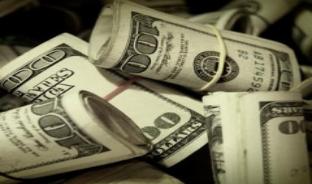
Oil options versus Oil futures
Options contracts give holders (long positions) the right but not the
obligation to buy or sell the underlying (depending on whether the
option is call or put). READ MORE ''
-------
How To Buy Oil Options ?
Crude oil options are the most widely traded energy derivative in the
New York Mercantile Exchange (NYMEX), one of the largest derivative
product markets in the world. READ MORE ''
CONTINUE READING ''
Options contracts give holders (long positions) the right but not the
obligation to buy or sell the underlying (depending on whether the
option is call or put). READ MORE ''
-------
How To Buy Oil Options ?
Crude oil options are the most widely traded energy derivative in the
New York Mercantile Exchange (NYMEX), one of the largest derivative
product markets in the world. READ MORE ''
CONTINUE READING ''



Futures contract
In finance, a futures contract (more colloquially, futures) is a
standardized forward contract which can be easily traded between
parties other than the two initial parties to the contract.
The parties initially agree to buy and sell an asset for a price agreed
upon today (the forward price) with delivery and payment occurring at a
future
In finance, a futures contract (more colloquially, futures) is a
standardized forward contract which can be easily traded between
parties other than the two initial parties to the contract.
The parties initially agree to buy and sell an asset for a price agreed
upon today (the forward price) with delivery and payment occurring at a
future
How Stock Futures Work ?
When you buy or sell a stock future, you're not buying or selling a stock
certificate.
You're entering into a stock futures contract -- an agreement to buy or
sell the stock certificate at a fixed price on a certain date.
Unlike a traditional stock purchase, you never own the stock, so you're
not entitled to dividends and you're not invited to stockholders meetings
Here's how it works. There are two basic positions on stock
futures: long and short.
The long position agrees to buy the stock when the contract expires.
The short position agrees to sell the stock when the contract expires.
If you think that the price of your stock will be higher in three months
than it is today, you want to go long. If you think the stock price will be
lower in three months, then you'll go short.
When you buy or sell a stock future, you're not buying or selling a stock
certificate.
You're entering into a stock futures contract -- an agreement to buy or
sell the stock certificate at a fixed price on a certain date.
Unlike a traditional stock purchase, you never own the stock, so you're
not entitled to dividends and you're not invited to stockholders meetings
Here's how it works. There are two basic positions on stock
futures: long and short.
The long position agrees to buy the stock when the contract expires.
The short position agrees to sell the stock when the contract expires.
If you think that the price of your stock will be higher in three months
than it is today, you want to go long. If you think the stock price will be
lower in three months, then you'll go short.
What's interesting about buying or
selling futures contracts is that you only pay for
a percentage of the price of the contract. This is called buying on margin.
A typical margin can be anywhere from 10 to 20 percent of the price of the
contract.
NOTE: When buying on margin, you should also keep in mind that your
stockbroker could issue a margin call if the value of your investment falls
below a predetermined level called the maintenance level [source:
Money.net Inc.]. A margin call means that you have to pay your broker
additional money to bring the value of the futures contract up to the
maintenance level.
selling futures contracts is that you only pay for
a percentage of the price of the contract. This is called buying on margin.
A typical margin can be anywhere from 10 to 20 percent of the price of the
contract.
NOTE: When buying on margin, you should also keep in mind that your
stockbroker could issue a margin call if the value of your investment falls
below a predetermined level called the maintenance level [source:
Money.net Inc.]. A margin call means that you have to pay your broker
additional money to bring the value of the futures contract up to the
maintenance level.
'' Commodities 101''
Overview Of Commodities
Trading
The four categories of trading
commodities include:
Energy (including crude oil, heating oil, natural gas and
gasoline)
Metals (including gold, silver, platinum and copper)
Livestock and Meat (including lean hogs, pork bellies, live cattle and
feeder cattle)
Agricultural (including corn, soybeans, wheat, rice, cocoa, coffee, cotton
and sugar)
Ancient civilizations traded a wide array of commodities, including
livestock, seashells, spices and gold. Although the quality of product, date
of delivery and transportation methods were often unreliable, commodity
trading was an essential business.
The might of empires can be viewed as somewhat proportionate to their
ability to create and manage complex trading systems and facilitate
commodity trades,
Overview Of Commodities
Trading
The four categories of trading
commodities include:
Energy (including crude oil, heating oil, natural gas and
gasoline)
Metals (including gold, silver, platinum and copper)
Livestock and Meat (including lean hogs, pork bellies, live cattle and
feeder cattle)
Agricultural (including corn, soybeans, wheat, rice, cocoa, coffee, cotton
and sugar)
Ancient civilizations traded a wide array of commodities, including
livestock, seashells, spices and gold. Although the quality of product, date
of delivery and transportation methods were often unreliable, commodity
trading was an essential business.
The might of empires can be viewed as somewhat proportionate to their
ability to create and manage complex trading systems and facilitate
commodity trades,
Investment Characteristics
Commodity trading in the exchanges can require agreed-upon standards
so that trades can be executed (without visual inspection). You don't
want to buy 100 units of cattle only to find out that the cattle are sick, or
discover that the sugar purchased is of inferior or unacceptable quality.
There are other ways in which trading and
investing in commodities can be very
different from investing in traditional securities such as stocks and
bonds. Global economic development, technological advances and
market demands for commodities influence the prices of staples such as
oil, aluminum, copper, sugar and corn.
Basic economic principles typically follow the commodities markets: lower
supply equals higher prices.
Exchanges
With commodities playing a major and critical role in the global economic
markets and affecting the lives of most people on the planet, there are
multitudes of commodity and futures exchanges around the world. Each
exchange carries a few commodities or specializes in a single commodity.
For instance, the U.S. Futures Exchange is an important exchange that
only carries energy commodities.
Commodity trading in the exchanges can require agreed-upon standards
so that trades can be executed (without visual inspection). You don't
want to buy 100 units of cattle only to find out that the cattle are sick, or
discover that the sugar purchased is of inferior or unacceptable quality.
There are other ways in which trading and
investing in commodities can be very
different from investing in traditional securities such as stocks and
bonds. Global economic development, technological advances and
market demands for commodities influence the prices of staples such as
oil, aluminum, copper, sugar and corn.
Basic economic principles typically follow the commodities markets: lower
supply equals higher prices.
Exchanges
With commodities playing a major and critical role in the global economic
markets and affecting the lives of most people on the planet, there are
multitudes of commodity and futures exchanges around the world. Each
exchange carries a few commodities or specializes in a single commodity.
For instance, the U.S. Futures Exchange is an important exchange that
only carries energy commodities.
Futures and Hedging
Futures, forward contracts and hedging are a prevalent practice with
commodities. The airline sector is an example of a large industry that must
secure massive amounts of fuel at stable prices for planning purposes.
Because of this need, airline companies engage in hedging and purchase
fuel at fixed rates (for a period of time) to avoid the market volatility of
crude and gasoline, which would make their financial statements more
volatile and riskier for investors.
Without futures and hedging, volatility in commodities could cause
bankruptcies for businesses that require predictability in managing their
expenses.
Are You Ready To Trade Futures?
you have to answer is: are you prepared and ready to learn how this
dynamic market works?
Futures do not trade in shares like stocks. They trade in contracts. Each
futures contract has a standard size that is set by the futures exchange it
trades on. For example, the contract size for gold futures is 100 ounces.
That means when you are buying one contract of gold, you are really
controlling 100 ounces of gold. If the price of gold moves $1 higher an
ounce, that will affect the position by $100 ($1 x 100 ounces). You need to
check each commodity or futures contract since each of them is unique.
Futures, forward contracts and hedging are a prevalent practice with
commodities. The airline sector is an example of a large industry that must
secure massive amounts of fuel at stable prices for planning purposes.
Because of this need, airline companies engage in hedging and purchase
fuel at fixed rates (for a period of time) to avoid the market volatility of
crude and gasoline, which would make their financial statements more
volatile and riskier for investors.
Without futures and hedging, volatility in commodities could cause
bankruptcies for businesses that require predictability in managing their
expenses.
Are You Ready To Trade Futures?
you have to answer is: are you prepared and ready to learn how this
dynamic market works?
Futures do not trade in shares like stocks. They trade in contracts. Each
futures contract has a standard size that is set by the futures exchange it
trades on. For example, the contract size for gold futures is 100 ounces.
That means when you are buying one contract of gold, you are really
controlling 100 ounces of gold. If the price of gold moves $1 higher an
ounce, that will affect the position by $100 ($1 x 100 ounces). You need to
check each commodity or futures contract since each of them is unique.
Conservative Vs. Aggressive
Investors
Generally, the more risk you can bear, the more aggressive your portfolio
will be, devoting a larger portion to equities and less to bonds and other
fixed-income securities.
Conversely, the less risk that's appropriate, the more conservative your
portfolio will be. Here are two examples: one suitable for a conservative
investor and another for the moderately aggressive investor.
Step 2: Achieving the Portfolio Designed in
Step 1
Once you've determined the right asset allocation, you simply need to
divide your capital between the appropriate asset classes. On a basic
level, this is not difficult: equities are equities, and bonds are bonds.
But you can further break down the different asset classes into
subclasses, which also have different risks and potential returns. For
example, an investor might divide the equity portion between different
sectors and market caps, and between domestic and foreign stock. The
bond portion might be allocated between those that are short term and
long term, government versus corporate debt and so forth.
There are several ways you can go about choosing the assets and
securities to fulfill your asset allocation strategy (remember to analyze the
quality and potential of each investment you buy - not all bonds and stocks
are the same):
Investors
Generally, the more risk you can bear, the more aggressive your portfolio
will be, devoting a larger portion to equities and less to bonds and other
fixed-income securities.
Conversely, the less risk that's appropriate, the more conservative your
portfolio will be. Here are two examples: one suitable for a conservative
investor and another for the moderately aggressive investor.
Step 2: Achieving the Portfolio Designed in
Step 1
Once you've determined the right asset allocation, you simply need to
divide your capital between the appropriate asset classes. On a basic
level, this is not difficult: equities are equities, and bonds are bonds.
But you can further break down the different asset classes into
subclasses, which also have different risks and potential returns. For
example, an investor might divide the equity portion between different
sectors and market caps, and between domestic and foreign stock. The
bond portion might be allocated between those that are short term and
long term, government versus corporate debt and so forth.
There are several ways you can go about choosing the assets and
securities to fulfill your asset allocation strategy (remember to analyze the
quality and potential of each investment you buy - not all bonds and stocks
are the same):
How To Use The P/E
Ratio And PEG To Tell A
Stock's Future
It is common practice for investors to use the
price-to-earnings ratio (P/E ratio or price
multiple) to determine if a company's stock price
is over or undervalued.
Companies with a high P/E ratio are typically
growth stocks. However, their relatively high
multiples do not necessarily mean their stocks
are overpriced and not good buys for the long
term.
Let's take a closer look at what the P/E ratio tells
us:
P/E Ratio p/e ratio
There are two primary components here, the
market value (price) of the stock and the
earnings of the company. Earnings are very
important to consider. After all, earnings
represent profits, and that's what every business
strives for.
Earnings are calculated by taking the hard
figures into account: revenue, cost of goods sold
(COGS), salaries, rent, etc. These are all
important to the livelihood of a company. If the
company isn't using its resources effectively it
will not have positive earnings, and problems will
eventually arise.
Besides earnings, there are other
factors that affect the value of a
stock. For example:
Brand - The name of a product or company has
value. Established brands such as Proctor &
Gamble are worth billions.
Human Capital - Now more than ever, a company's
employees and their expertise are thought to add
value to the company.
Expectations - The stock market is forward
looking. You buy a stock because of high
expectations for strong profits, not because of
past achievements.
Barriers to Entry - For a company to be
successful in the long run, it must have
strategies to keep competitors from entering the
industry. For example, most anyone can make a
soda, but marketing and distributing that
beverage on the same level as Coca-Cola is very
costly.
Ratio And PEG To Tell A
Stock's Future
It is common practice for investors to use the
price-to-earnings ratio (P/E ratio or price
multiple) to determine if a company's stock price
is over or undervalued.
Companies with a high P/E ratio are typically
growth stocks. However, their relatively high
multiples do not necessarily mean their stocks
are overpriced and not good buys for the long
term.
Let's take a closer look at what the P/E ratio tells
us:
P/E Ratio p/e ratio
There are two primary components here, the
market value (price) of the stock and the
earnings of the company. Earnings are very
important to consider. After all, earnings
represent profits, and that's what every business
strives for.
Earnings are calculated by taking the hard
figures into account: revenue, cost of goods sold
(COGS), salaries, rent, etc. These are all
important to the livelihood of a company. If the
company isn't using its resources effectively it
will not have positive earnings, and problems will
eventually arise.
Besides earnings, there are other
factors that affect the value of a
stock. For example:
Brand - The name of a product or company has
value. Established brands such as Proctor &
Gamble are worth billions.
Human Capital - Now more than ever, a company's
employees and their expertise are thought to add
value to the company.
Expectations - The stock market is forward
looking. You buy a stock because of high
expectations for strong profits, not because of
past achievements.
Barriers to Entry - For a company to be
successful in the long run, it must have
strategies to keep competitors from entering the
industry. For example, most anyone can make a
soda, but marketing and distributing that
beverage on the same level as Coca-Cola is very
costly.
All these factors will affect a
company's earnings growth
rate. Because the P/E ratio uses past
earnings (trailing 12 months), it gives a less
accurate reflection of these growth potentials.
The relationship between the price/earnings
ratio and earnings growth tells a more complete
story than the P/E on its own. This is called the
PEG ratio and is formulated as:
PEG ratio
*The number used for annual growth rate can
vary. It can be forward (predicted growth) or
trailing, and either a one- to five-year time span.
Check with the source providing the PEG ratio
to see what kind of number they use.
Looking at the value of PEG of companies is
similar to looking at the P/E ratio: A lower PEG
means the stock is more undervalued.
Comparative Value
Let's demonstrate the PEG ratio with an
example. Say you are interested in buying stock
in one of two companies. The first is a
networking company with 20% annual growth in
net income and a P/E ratio of 50.
The second company is in the beer brewing
business. It has lower earnings growth at 10%
and its P/E ratio is also relatively low at 15.
(There are many other common ratios to use
when comparing stocks, such as the P/S ratio.
Learn more in How To Use Price-To-Sales Ratios
To Value Stock.)
Many investors justify the stock valuations of
tech companies by relying on the assumption
that these companies have enormous growth
potential. Can we do the same in our example?
Networking Company:
P/E ratio (50) divided by the annual earnings
growth rate (20) = PEG ratio of 2.5
Beer Company:
P/E ratio (15) divided by the annual
earnings growth rate (10) = PEG ratio of 1.5
The PEG ratio shows us that, when compare to
the beer company, the always-popular tech
company doesn't have the growth rate to justify
its higher P/E, and its stock price appears
overvalued.
The Bottom Line
Subjecting the traditional P/E ratio to the impact
of future earnings growth produces the more
informative PEG ratio. The PEG ratio provides
more insight about a stock's current valuation.
By providing a forward-looking perspective, the
PEG is a valuable evaluative tool for investors
attempting to discern a stock's future prospects.
(Every investor wants an edge in predicting a
company's future, but a company's earnings
guidance statements may not be a reliable
source.
company's earnings growth
rate. Because the P/E ratio uses past
earnings (trailing 12 months), it gives a less
accurate reflection of these growth potentials.
The relationship between the price/earnings
ratio and earnings growth tells a more complete
story than the P/E on its own. This is called the
PEG ratio and is formulated as:
PEG ratio
*The number used for annual growth rate can
vary. It can be forward (predicted growth) or
trailing, and either a one- to five-year time span.
Check with the source providing the PEG ratio
to see what kind of number they use.
Looking at the value of PEG of companies is
similar to looking at the P/E ratio: A lower PEG
means the stock is more undervalued.
Comparative Value
Let's demonstrate the PEG ratio with an
example. Say you are interested in buying stock
in one of two companies. The first is a
networking company with 20% annual growth in
net income and a P/E ratio of 50.
The second company is in the beer brewing
business. It has lower earnings growth at 10%
and its P/E ratio is also relatively low at 15.
(There are many other common ratios to use
when comparing stocks, such as the P/S ratio.
Learn more in How To Use Price-To-Sales Ratios
To Value Stock.)
Many investors justify the stock valuations of
tech companies by relying on the assumption
that these companies have enormous growth
potential. Can we do the same in our example?
Networking Company:
P/E ratio (50) divided by the annual earnings
growth rate (20) = PEG ratio of 2.5
Beer Company:
P/E ratio (15) divided by the annual
earnings growth rate (10) = PEG ratio of 1.5
The PEG ratio shows us that, when compare to
the beer company, the always-popular tech
company doesn't have the growth rate to justify
its higher P/E, and its stock price appears
overvalued.
The Bottom Line
Subjecting the traditional P/E ratio to the impact
of future earnings growth produces the more
informative PEG ratio. The PEG ratio provides
more insight about a stock's current valuation.
By providing a forward-looking perspective, the
PEG is a valuable evaluative tool for investors
attempting to discern a stock's future prospects.
(Every investor wants an edge in predicting a
company's future, but a company's earnings
guidance statements may not be a reliable
source.
The Essentials of Commodities Trading
If you want to invest in commodities, you should be aware of the range of different commodities that are available for trading, as
well as the risks associated with each investment option. You also need to find a good brokerage firm to trade through.
What Are Commodities?
Put simply, commodities are the raw materials humans use to create a livable world. Humans use energy to sustain themselves,
metals to build weapons and tools, and agricultural products to feed themselves
What Are Commodities Exchange Traded Funds All About?
Many financial institutions are now offering commodities Exchange Traded Funds, or ETFs. This new breed of ETF enables you to
buy into a fund that offers the diversification inherent in a mutual fund
Questions to Ask before Investing in Any Commodity
Whether you decide to invest through futures contracts, managed funds, or commodity companies, you need to gather as much
information as possible before you start trading
Opening an Account with a Commodity Broker
To start trading exchange-traded products, you have to open a trading account with a commodity broker who’s licensed to
conduct business on behalf of clients at the exchange.
Commodity Trading Advisor
If you are trading commodities through a managed account, you need to select a commodity trading advisor (CTA). A CTA is a
securities professional who is licensed by the Financial Industry Regulatory Authority
Placing Orders at the Commodities Exchange
Your trading account is your link to the commodity exchange. The broker’s trading platform gives you access to the exchange’s
main products, such as futures contracts, options on futures, and other derivative
If you want to invest in commodities, you should be aware of the range of different commodities that are available for trading, as
well as the risks associated with each investment option. You also need to find a good brokerage firm to trade through.
What Are Commodities?
Put simply, commodities are the raw materials humans use to create a livable world. Humans use energy to sustain themselves,
metals to build weapons and tools, and agricultural products to feed themselves
What Are Commodities Exchange Traded Funds All About?
Many financial institutions are now offering commodities Exchange Traded Funds, or ETFs. This new breed of ETF enables you to
buy into a fund that offers the diversification inherent in a mutual fund
Questions to Ask before Investing in Any Commodity
Whether you decide to invest through futures contracts, managed funds, or commodity companies, you need to gather as much
information as possible before you start trading
Opening an Account with a Commodity Broker
To start trading exchange-traded products, you have to open a trading account with a commodity broker who’s licensed to
conduct business on behalf of clients at the exchange.
Commodity Trading Advisor
If you are trading commodities through a managed account, you need to select a commodity trading advisor (CTA). A CTA is a
securities professional who is licensed by the Financial Industry Regulatory Authority
Placing Orders at the Commodities Exchange
Your trading account is your link to the commodity exchange. The broker’s trading platform gives you access to the exchange’s
main products, such as futures contracts, options on futures, and other derivative
Commodity market
A commodity market is a market that trades in primary economic sector rather than
manufactured products. Soft commodities are agricultural products such as wheat,
coffee, cocoa and sugar.
Hard commodities are mined, such as gold and oil. Investors access about 50 major
commodity markets worldwide with purely financial transactions increasingly
outnumbering physical trades in which goods are delivered.
A commodity market is a market that trades in primary economic sector rather than
manufactured products. Soft commodities are agricultural products such as wheat,
coffee, cocoa and sugar.
Hard commodities are mined, such as gold and oil. Investors access about 50 major
commodity markets worldwide with purely financial transactions increasingly
outnumbering physical trades in which goods are delivered.
Futures contracts are the oldest way of
investing in commodities. Futures are secured by
physical assets. Commodity markets can include physical trading and
derivatives trading using spot prices, forwards, futures, and options on
futures. Farmers have used a simple form of derivative trading in the
commodity market for centuries for price risk management.
A financial derivative is a financial instrument whose value
is derived from a commodity termed an underlier. Derivatives are either
exchange-traded or over-the-counter (OTC).
An increasing number of derivatives are traded via clearing houses some
with Central Counterparty Clearing, which provide clearing and
settlement services on a futures exchange, as well as off-exchange in the
OTC marke.
investing in commodities. Futures are secured by
physical assets. Commodity markets can include physical trading and
derivatives trading using spot prices, forwards, futures, and options on
futures. Farmers have used a simple form of derivative trading in the
commodity market for centuries for price risk management.
A financial derivative is a financial instrument whose value
is derived from a commodity termed an underlier. Derivatives are either
exchange-traded or over-the-counter (OTC).
An increasing number of derivatives are traded via clearing houses some
with Central Counterparty Clearing, which provide clearing and
settlement services on a futures exchange, as well as off-exchange in the
OTC marke.
In 1864, in the United States, wheat, corn, cattle,
and pigs were widely traded using standard instruments on the Chicago Board of
Trade (CBOT), the world's oldest futures and options exchange. Other food
commodities were added to the Commodity Exchange Act and traded through
CBOT in the 1930s and 1940s, expanding the list from grains to include rice, mill
feeds, butter, eggs, Irish potatoes and soybeans.
Successful commodity markets require broad consensus on product variations to
make each commodity acceptable for trading, such as the purity of gold in bullion.
---------------
Commodity price index
In 1934, the US Bureau of Labor Statistics began the computation of a daily
Commodity price index that became available to the public in 1940. By 1952, the
Bureau of Labor Statistics issued a Spot Market Price Index that measured the
price movements of "22 sensitive basic commodities whose markets are
presumed to be among the first to be influenced by changes in economic
conditions.
-------------------
Commodity index fund
A commodity index fund is a fund whose assets are invested in financial
instruments based on or linked to a commodity index. In just about every case the
index is in fact a Commodity Futures Index.
The first such index was the Commodity Research Bureau (CRB) Index, which
began in 1958.
Its construction made it unuseful as an investment index. The first practically
investable commodity futures index was the Goldman Sachs Commodity Index,
created in 1991.
---------------
and pigs were widely traded using standard instruments on the Chicago Board of
Trade (CBOT), the world's oldest futures and options exchange. Other food
commodities were added to the Commodity Exchange Act and traded through
CBOT in the 1930s and 1940s, expanding the list from grains to include rice, mill
feeds, butter, eggs, Irish potatoes and soybeans.
Successful commodity markets require broad consensus on product variations to
make each commodity acceptable for trading, such as the purity of gold in bullion.
---------------
Commodity price index
In 1934, the US Bureau of Labor Statistics began the computation of a daily
Commodity price index that became available to the public in 1940. By 1952, the
Bureau of Labor Statistics issued a Spot Market Price Index that measured the
price movements of "22 sensitive basic commodities whose markets are
presumed to be among the first to be influenced by changes in economic
conditions.
-------------------
Commodity index fund
A commodity index fund is a fund whose assets are invested in financial
instruments based on or linked to a commodity index. In just about every case the
index is in fact a Commodity Futures Index.
The first such index was the Commodity Research Bureau (CRB) Index, which
began in 1958.
Its construction made it unuseful as an investment index. The first practically
investable commodity futures index was the Goldman Sachs Commodity Index,
created in 1991.
---------------
Forward contracts
A forward contract is an agreement between two parties to exchange at some
fixed future date a given quantity of a commodity for a price defined when the
contract is finalized. The fixed price is known as the forward price.
Such forward contracts began as a way of reducing pricing risk in food and
agricultural product markets, because farmers knew what price they would
receive for their output.
Forward contracts for example, were used for rice in seventeenth century
Japan.
Futures contract
Futures contracts are standardized forward contracts that are transacted
through an exchange. In futures contracts the buyer and the seller stipulate
product, grade, quantity and location and leaving price as the only variable.
Agricultural futures contracts are the oldest, in use in the United States for more
than 170 years. Modern futures agreements, began in Chicago in the 1840s, with
the appearance of the railroads. Chicago, centrally located, emerged as the hub
between Midwestern farmers and east coast consumer population centers.
Swaps
A Swap is a derivative in which counterparties exchange the cash flows of one
party's financial instrument for those of the other party's financial instrument.
They were introduced in the 1970s.
A forward contract is an agreement between two parties to exchange at some
fixed future date a given quantity of a commodity for a price defined when the
contract is finalized. The fixed price is known as the forward price.
Such forward contracts began as a way of reducing pricing risk in food and
agricultural product markets, because farmers knew what price they would
receive for their output.
Forward contracts for example, were used for rice in seventeenth century
Japan.
Futures contract
Futures contracts are standardized forward contracts that are transacted
through an exchange. In futures contracts the buyer and the seller stipulate
product, grade, quantity and location and leaving price as the only variable.
Agricultural futures contracts are the oldest, in use in the United States for more
than 170 years. Modern futures agreements, began in Chicago in the 1840s, with
the appearance of the railroads. Chicago, centrally located, emerged as the hub
between Midwestern farmers and east coast consumer population centers.
Swaps
A Swap is a derivative in which counterparties exchange the cash flows of one
party's financial instrument for those of the other party's financial instrument.
They were introduced in the 1970s.
How to Invest in Commodities
-- How does commodity futures
trading work and what are the
risks?
==========================
''Commodity Futures, Commodities
Trading,
What is a 'Commodity'
A commodity is a basic good used in commerce that is interchangeable
with other commodities of the same type. Commodities are most often
used as inputs in the production of other goods or services. The
quality of a given commodity may differ slightly
-- How does commodity futures
trading work and what are the
risks?
==========================
''Commodity Futures, Commodities
Trading,
What is a 'Commodity'
A commodity is a basic good used in commerce that is interchangeable
with other commodities of the same type. Commodities are most often
used as inputs in the production of other goods or services. The
quality of a given commodity may differ slightly
Commodity Futures Contract
What is a 'Commodity Futures Contract'
A commodity futures contract is an agreement to buy or sell a set amount
of a commodity at a predetermined price and date. Buyers use these to
avoid the risks associated with the price fluctuations of the product or raw
material, while sellers try to lock in a price for their products. Like in all
financial markets, others use such contracts to gamble on price
movements.
Commodity Futures Contract'
Trading in commodity futures contracts can be very risky for the
inexperienced. One cause of this risk is the high amount of leverage
generally involved in holding futures contracts
What is a 'Commodity Futures Contract'
A commodity futures contract is an agreement to buy or sell a set amount
of a commodity at a predetermined price and date. Buyers use these to
avoid the risks associated with the price fluctuations of the product or raw
material, while sellers try to lock in a price for their products. Like in all
financial markets, others use such contracts to gamble on price
movements.
Commodity Futures Contract'
Trading in commodity futures contracts can be very risky for the
inexperienced. One cause of this risk is the high amount of leverage
generally involved in holding futures contracts
Commodity Trading Basics- Futures
and Options 101
Futures Options Trading
Futures Options Trading 101 is available free to help both experienced and
beginning futures market traders. You may also register free to receive our
special advanced options trading info
What is a call option?
A call option gives the purchaser the right but not the obligation to buy an
underlying futures contract. Purchasing a call means that you are expecting
higher prices for the underlying commodity. Let’s assume you purchased a
December Crude Oil $60 call option. You bought the right but not the obligation to
buy 1,000 barrels of December crude oil for $60 per barrel.
What is a put option?
A put option gives the purchaser the right but not the obligation to sell an
underlying futures contract. Purchasing a put means that you are expecting lower
prices for the underlying commodity.
Let’s assume that you purchased a November Soybean $5 put option. You bought
the right but not the obligation to sell 5,000 bushels of November soybeans at $5
per bushel.
How is the value of an option figured out?
To understand option trading basics first you have to understand the meaning of
intrinsic and extrinsic value. The option premium is made up of both of these
values. Intrinsic is the value of the option if you exercised it to the futures
contract and then offset it.
For example if you have a Nov. $5 soybean call and the futures price for that
contract is $5.20 hence there is a .20 intrinsic value for that option. Soybeans are
a 5,000 bushel contract so 20 cents multiplied by 5,000= $1,000 intrinsic value for
that option.
and Options 101
Futures Options Trading
Futures Options Trading 101 is available free to help both experienced and
beginning futures market traders. You may also register free to receive our
special advanced options trading info
What is a call option?
A call option gives the purchaser the right but not the obligation to buy an
underlying futures contract. Purchasing a call means that you are expecting
higher prices for the underlying commodity. Let’s assume you purchased a
December Crude Oil $60 call option. You bought the right but not the obligation to
buy 1,000 barrels of December crude oil for $60 per barrel.
What is a put option?
A put option gives the purchaser the right but not the obligation to sell an
underlying futures contract. Purchasing a put means that you are expecting lower
prices for the underlying commodity.
Let’s assume that you purchased a November Soybean $5 put option. You bought
the right but not the obligation to sell 5,000 bushels of November soybeans at $5
per bushel.
How is the value of an option figured out?
To understand option trading basics first you have to understand the meaning of
intrinsic and extrinsic value. The option premium is made up of both of these
values. Intrinsic is the value of the option if you exercised it to the futures
contract and then offset it.
For example if you have a Nov. $5 soybean call and the futures price for that
contract is $5.20 hence there is a .20 intrinsic value for that option. Soybeans are
a 5,000 bushel contract so 20 cents multiplied by 5,000= $1,000 intrinsic value for
that option.
What is a bull call spread?
A bull call spread is a bullish strategy to take advantage of markets with high
volatility option premiums. It involves the purchase of a at or close to the money
call option and the granting of a further out of the money call option.
The profit potential is the difference between the strike prices minus your costs
and your risks are the cost of the trade.
-------------Free Futures and Options Online Trading
Demo
What is a bear put spread?
A bear put spread is just like the bull call spread above but it uses puts instead of
calls and is for speculating on a decline in prices. So you would buy an at or near
the money put and grant a further out of the money put.
A bull call spread is a bullish strategy to take advantage of markets with high
volatility option premiums. It involves the purchase of a at or close to the money
call option and the granting of a further out of the money call option.
The profit potential is the difference between the strike prices minus your costs
and your risks are the cost of the trade.
-------------Free Futures and Options Online Trading
Demo
What is a bear put spread?
A bear put spread is just like the bull call spread above but it uses puts instead of
calls and is for speculating on a decline in prices. So you would buy an at or near
the money put and grant a further out of the money put.
How to Trade Commodities Options
Whether the economy is hot or not, an investor can make money
trading commodity options, regardless of the condition of the market.
Briefly, a commodity option allows its owner to either sell or buy a
commodity like corn or wheat at a future date.
You will buy a so-called "put option" if you think the price of the
commodity will go down and a "call option" if you think the price will
rise. And never will you have to take possession of the commodity
itself.
--------------
Learn the difference between owning a commodity and having a
commodity option. If you own an option, you have an instrument that
will expire, unlike owning the commodity itself.
Also, there is no limit to the number of options that exist, unlike the
finite nature of commodities.
Decide whether you think a commodity will sell for more or for less at
some designated time in the future, then buy either a "put" or a "call"
option.
----------------
Whether the economy is hot or not, an investor can make money
trading commodity options, regardless of the condition of the market.
Briefly, a commodity option allows its owner to either sell or buy a
commodity like corn or wheat at a future date.
You will buy a so-called "put option" if you think the price of the
commodity will go down and a "call option" if you think the price will
rise. And never will you have to take possession of the commodity
itself.
--------------
Learn the difference between owning a commodity and having a
commodity option. If you own an option, you have an instrument that
will expire, unlike owning the commodity itself.
Also, there is no limit to the number of options that exist, unlike the
finite nature of commodities.
Decide whether you think a commodity will sell for more or for less at
some designated time in the future, then buy either a "put" or a "call"
option.
----------------
Bid" Price
The term "bid" refers to the highest price a buyer will pay to buy a
specified number of shares of a stock at any given time. The term "ask"
refers to the lowest price at which a seller will sell the stock.
The bid price will almost always be lower than the ask or “offer,” price. The
difference between the bid price and the ask price is called the "spread."
Ask price, also called offer price, offer, asking price,
or simply ask, is the price a seller states she or he
will accept.
The seller may qualify the stated asking price as firm or negotiable. Firm
means the seller is implying that the price is fixed and will not change.
In bid and ask, the term ask price is used in contrast to the term bid price.
The difference between the bid price and the ask price is called the spread.
=================
Bid And Asked'
A two-way price quotation that indicates the best price at which a security
can be sold and bought at a given point in time.The bid price represents
the maximum price that a buyer or buyers are willing to pay for a security.
The ask price represents the minimum price that a seller or sellers are
willing to receive for the security. A trade or transaction occurs when the
buyer and seller agree on a price for the security.
The difference between the bid and asked prices, or the spread, is a key
indicator of the liquidity of the asset - generally speaking, the smaller the
spread, the better the liquidity.
Bid And Asked' Price
The average investor has to contend with the bid and asked spread as an
implied cost of trading. For example, if the current price quotation for
security A is $10.50 / $10.55, investor X who is looking to buy A at the
current market price would pay $10.55, while investor Y who wishes to sell
A at the current market price would receive $10.50.
The bid-ask spread works to the advantage of the
market maker. Continuing with the above example
Bid-ask spreads can vary widely depending
on the security and the market. The blue-chips that
constitute the Dow Jones Industrial Average may have a bid-ask spread of
a few cents, while a small-cap stock may have a bid-ask spread of 50 cents
or more. On a percentage basis, the difference between the bid and asked
prices of the former may be much smaller than that of the latter.
=============
The bid-ask spread can widen dramatically during periods of illiquidity or
market turmoil, since traders will not be willing to pay a price beyond a
certain threshold while sellers may not be willing to accept prices below a
certain level.
The term "bid" refers to the highest price a buyer will pay to buy a
specified number of shares of a stock at any given time. The term "ask"
refers to the lowest price at which a seller will sell the stock.
The bid price will almost always be lower than the ask or “offer,” price. The
difference between the bid price and the ask price is called the "spread."
Ask price, also called offer price, offer, asking price,
or simply ask, is the price a seller states she or he
will accept.
The seller may qualify the stated asking price as firm or negotiable. Firm
means the seller is implying that the price is fixed and will not change.
In bid and ask, the term ask price is used in contrast to the term bid price.
The difference between the bid price and the ask price is called the spread.
=================
Bid And Asked'
A two-way price quotation that indicates the best price at which a security
can be sold and bought at a given point in time.The bid price represents
the maximum price that a buyer or buyers are willing to pay for a security.
The ask price represents the minimum price that a seller or sellers are
willing to receive for the security. A trade or transaction occurs when the
buyer and seller agree on a price for the security.
The difference between the bid and asked prices, or the spread, is a key
indicator of the liquidity of the asset - generally speaking, the smaller the
spread, the better the liquidity.
Bid And Asked' Price
The average investor has to contend with the bid and asked spread as an
implied cost of trading. For example, if the current price quotation for
security A is $10.50 / $10.55, investor X who is looking to buy A at the
current market price would pay $10.55, while investor Y who wishes to sell
A at the current market price would receive $10.50.
The bid-ask spread works to the advantage of the
market maker. Continuing with the above example
Bid-ask spreads can vary widely depending
on the security and the market. The blue-chips that
constitute the Dow Jones Industrial Average may have a bid-ask spread of
a few cents, while a small-cap stock may have a bid-ask spread of 50 cents
or more. On a percentage basis, the difference between the bid and asked
prices of the former may be much smaller than that of the latter.
=============
The bid-ask spread can widen dramatically during periods of illiquidity or
market turmoil, since traders will not be willing to pay a price beyond a
certain threshold while sellers may not be willing to accept prices below a
certain level.
Market maker
A market maker or liquidity provider is a company, or an individual, that
quotes both a buy and a sell price in a financial instrument or commodity
held in inventory, hoping to make a profit on the bid-offer spread, or turn.
The U.S. Securities and Exchange Commission defines a "market maker" as
a firm that stands ready to buy and sell stock on a regular and continuous
basis at a publicly quoted price.
A Designated Primary Market Maker (DPM) is a specialized market maker
approved by an exchange to guarantee that he or she will take the position
in a particular assigned security, option or option index
A market maker or liquidity provider is a company, or an individual, that
quotes both a buy and a sell price in a financial instrument or commodity
held in inventory, hoping to make a profit on the bid-offer spread, or turn.
The U.S. Securities and Exchange Commission defines a "market maker" as
a firm that stands ready to buy and sell stock on a regular and continuous
basis at a publicly quoted price.
A Designated Primary Market Maker (DPM) is a specialized market maker
approved by an exchange to guarantee that he or she will take the position
in a particular assigned security, option or option index
| Livestock Futures and Options = Livestock products including live cattle, feeder cattle, and lean hogs |
| Grain and Oilseed Futures and Options = Manage risk, facilitate price discovery, and capture market opportunities with Grain and Oilseed Futures and Options including corn, wheat, soybeans, and soybean meal and oil. |
| Grain and Oilseed Futures and Options including corn, wheat, soybeans, and soybean meal and oil. Dairy Futures and Options = Manage dairy price risk inherent in your operation = futures and options on milk and dairy products. |
| Cocoa Futures and Options Cocoa futures and options provide enhanced risk-management solutions along the entire supply chain |
| How to Invest in Commodities? -===- How does commodity futures trading work and what are the risks? === What is a 'Commodity? |
| '' How To Own Investment Homes - Income Producing Properties - The advantage of owning a real estate property. LEARN MORE... ----------- '' The south Florida Real Estate Market Update: Buying - Selling - Investing - Renting. LEARN MORE... -------------- '' Real Estate Info About: Single Family Home - Town-home - Co-Op - Condominiums - Commercial real estate - Timeshare. LEARN MORE... ------------- '' Real estate Portfolios. How To Find The Best Real Estate Investments? Do You Know That There are About At Least 10 Ten Different Ways To Invest In Real Estate? LEARN MORE.. -------------- Commercial Real Estate: Ways to Evaluate Commercial Property.. How To Get Involve In Commercial Properties? LEARN MORE... ---------------- '' Real Estate News And Blogs: '' Real Estate Investing Tools & Resources. LEARN MORE... ---------------- ' '' FREE Home Value Report! '' How Much Is This House Worth? '' Find Out Now For FREE Fast, Easy & Simple. - Free Comparative Market Analysis (CMA) - '' Free Broker's price opinions { B P O }... LEARN MORE... -------------- '' Home Inspection: Here's What Everyone Needs To Know About Home Inspectors & Inspection Step One - Step Two & Step Three.. LEARN MORE... --------------- '' Real Estate For Sellers // = // '' Real Estate For Buyers / '' Real Estate Listings // = |
Financial Articles #1. KN
CENTER
'' Great Jobs Without A College Degree And How To
Get Them..
'' 10 Things People Buy They Should Get Free...
'' 101 Ways To Make Money, Best Business Ideas Ever
Found On The Web The Path To Financial Freedom.
LEARN MORE...
-------------
Financial Articles 2. Millionaire
Mind SET
'' Passive Income How to Earn More Money and Work
Less...
'' Money saving and budgeting, 80 excellent ways to
save money this year and every year. LEARN MORE...
----------------
Financial Article 3. Investing
Option
Your choice of investment Opportunity - Tools and
resources to fit your investing
style.. How to buy and selling securities investment
products. LEARN MORE..
------------------------
Financial Article 4. Wealth
Preservation - WILL AND LIVING
TRUST: Wealth Management!
Advice: Trust funds - Trust Account can help people
preserve wealth. What is a Living Trust?
What is probate? What is a will? How does a living
trust avoid probate? What is an Estate Plan?
What kinds of trusts are OUT- there? LEARN MORE...
------------------
5. ''Visionone Holding Company,
How To Invest - Where To Invest - When To Invest -
What To Invest In? LEARN MORE...
-------------
6. Dollar Vision
The ultimate opportunity,CAREER OPPORTUNITY TO
MAKE GOOD MONEY, discover your business
opportunity today. 99 ways to earning money on the
side. LEARN MORE...
CENTER
'' Great Jobs Without A College Degree And How To
Get Them..
'' 10 Things People Buy They Should Get Free...
'' 101 Ways To Make Money, Best Business Ideas Ever
Found On The Web The Path To Financial Freedom.
LEARN MORE...
-------------
Financial Articles 2. Millionaire
Mind SET
'' Passive Income How to Earn More Money and Work
Less...
'' Money saving and budgeting, 80 excellent ways to
save money this year and every year. LEARN MORE...
----------------
Financial Article 3. Investing
Option
Your choice of investment Opportunity - Tools and
resources to fit your investing
style.. How to buy and selling securities investment
products. LEARN MORE..
------------------------
Financial Article 4. Wealth
Preservation - WILL AND LIVING
TRUST: Wealth Management!
Advice: Trust funds - Trust Account can help people
preserve wealth. What is a Living Trust?
What is probate? What is a will? How does a living
trust avoid probate? What is an Estate Plan?
What kinds of trusts are OUT- there? LEARN MORE...
------------------
5. ''Visionone Holding Company,
How To Invest - Where To Invest - When To Invest -
What To Invest In? LEARN MORE...
-------------
6. Dollar Vision
The ultimate opportunity,CAREER OPPORTUNITY TO
MAKE GOOD MONEY, discover your business
opportunity today. 99 ways to earning money on the
side. LEARN MORE...
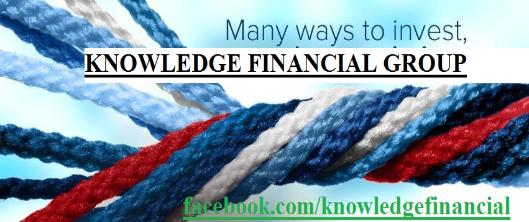
Financial Article 7. Secret
Society
WHO REALLY RUNS THE WORLD? TAKE A
LOOK AT THE SECRET SOCIETIES... Yes here
are things you may not know yet! Secret
Societies Control the World and everything
that is including. LEARN MORE HERE...
----------
Financial Freedom:
How to Become Wealthy? Save Smartly,
Invest Wisely'' Managing Money Constantly,
Invest considerably. Ten Resolutions to Make
Your Financial Life Easier'' The Capitalist
Class And Money. LEARN MORE...
--------------
Secret of Wealth:
Prosperity And Abundance According To The
Scriptures.
AFFIRMATION: Prosperity within us,
abundance within use, wealth surrounding us.
LEARN MORE...
-------------------
Rule Of Success: The Rules
of Money, THE JOURNEY...
Money,How to Make It, and How to Hold on to
It - Basic Money Rules That Could Make You
Change Your Life Financially. '' MONEY AND
WEALTH'' LEARN MORE...
-----------------
Financial Knowledge:
Ten Tips For The Successful Long-Term
Investors. ''10 Reasons to Open a Roth IRA''-
Ten Steps to Building a Winning Trading And
Investment Plan. LEARN MORE HERE...
Society
WHO REALLY RUNS THE WORLD? TAKE A
LOOK AT THE SECRET SOCIETIES... Yes here
are things you may not know yet! Secret
Societies Control the World and everything
that is including. LEARN MORE HERE...
----------
Financial Freedom:
How to Become Wealthy? Save Smartly,
Invest Wisely'' Managing Money Constantly,
Invest considerably. Ten Resolutions to Make
Your Financial Life Easier'' The Capitalist
Class And Money. LEARN MORE...
--------------
Secret of Wealth:
Prosperity And Abundance According To The
Scriptures.
AFFIRMATION: Prosperity within us,
abundance within use, wealth surrounding us.
LEARN MORE...
-------------------
Rule Of Success: The Rules
of Money, THE JOURNEY...
Money,How to Make It, and How to Hold on to
It - Basic Money Rules That Could Make You
Change Your Life Financially. '' MONEY AND
WEALTH'' LEARN MORE...
-----------------
Financial Knowledge:
Ten Tips For The Successful Long-Term
Investors. ''10 Reasons to Open a Roth IRA''-
Ten Steps to Building a Winning Trading And
Investment Plan. LEARN MORE HERE...
| Get expert advice on real estate from Anthony, The South Florida Real Estate Professional: Realtor. Home Buyers My dedication to my clients is what sets me apart. When you hire me Anthony Jeanty Realtor, Real Estate Professional to help with your first home purchase, here's what you can expect: |
| Why you should choose me Anthony to be your Buyer's Agent? For most families, choosing a new home is the biggest financial decision they will ever make. There are many complicated decisions involved in choosing your new home. To protect your interests and assure that you make the best possible decisions, it's important that you have an agent on your side who is an expert in the local real estate market. As your agent, my focus is on getting you the best possible home at the best possible price. I will work hard not only in finding you potential new homes to see, but also in keeping you informed of everything that takes place. As your agent and a top expert in the local market, I'll negotiate the best prices and terms for you and answer all of your questions as they arise. I'll be representing you, not the seller. This assures that my experience and expertise in the local market will be used in your best interests during the negotiation process. |
| As your agent, I will: Assure that you see all the properties in the area that meet your criteria. Not just those listed on the local MLS, but also many un-listed properties that I find through my local contacts and affiliations. Guide you through the entire process, from finding homes to look at, to getting the best financing. Make sure you don't pay too much for your new home. As a real estate expert in this area, I help people negotiate and make home purchase decisions every day. I can help you avoid costly mistakes. Answer all of your questions about the local market area. Not just about homes for sale, but about schools, neighborhoods, the local economy and more. ------------------------ Let me help you find your dream home and assure your best interests are protected throughout the entire process. Feel free to call or e-mail me with any questions you may have at any time. Fill out this form and I'll get back to you right away. -------------------- Home Sellers Ways to Choose a Knowledgeable, Expert Agent in Florida To Help You? Selling a house is not a trivial task. Don't waste time with an agent who is a bad fit. I have the skills and techniques to get your home in Miami sold quickly. Even the most desirable homes need an expert behind the deal. Putting your transaction in the wrong hands makes selling your home a pain. Your interests remain at the forefront throughout the whole selling process. You’ll have my market knowledge, my expertise on your side. As a resourceful real estate professional in Miami-Dade, Broward And Palm Beach County, I'll strive to get the best price for your home and get it sold as quickly as possible. |
| How much is your home worth? If you are thinking of selling your home, you'll need to know exactly what it is worth before putting it on the market. As a South Florida real estate professional, I analyze home values and determine market prices every day. By comparing your home to recent sales and other, similar homes on the market I can quickly tell you what your home is worth. This analysis is known as "Comparative Market Analysis", or CMA. Just fill out the form to give me the information I need and I'll be glad to perform a CMA for your home and provide you the results at no cost to you. Looking to Sell? Are you looking to sell your house? Let us help you. Just fill out as much of the information below that you want and we'll get right back to you, with no obligation to you. We guarantee your privacy. |
| I strive everyday to provide the best service possible and produce the disired result for my clients. I am ready to bring forth all my talents – knowledge – experience – resources and expertise to help real estate sellers and buyers Professionalism As a successful real estate professional, I am committed to sell your property at the earliest time possible and for the most available price.... Your listings will be on over 100 different websites, blogs and social media where thousands of potential buyers will be able to see your for sell property Let Anthony be your trusted real estate advisor you can rely on whether it’s for real estate listing – selling – buying – leasing and, or investing Let me be your trusted real estate advisor, let me be your main source of information when it comes to real estate It is permitted for you as real estate sellers or buyers to use my time – my expertise – my market knowledge – my real estate experience to achieve your real estate goals |
| Anthony Jeanty, Agent Anthony Is Proud To Serve & To Help The People In Miami Dade, Broward & Palm Beach County, Florida With Their Real Estate Needs And Also Life Insurance. ------------ Thank You In Advance For Thinking About Anthony Jeanty, Agent Antony As Your Potential Agent. ------------ Agent Anthony Is On Every Social Media You Can Think Of. Please Follow Us, Connect With Us, Like Us... '' Facebook / - / Twitter / - / Linkedin / - / Trulia/Zillow / - / Agent Athony Website / - / '' Agent Anthony on Google+ Plus / - / '' Agent Anthony Blogs / - / Agent Anthony Webpage / - / Agent Anthony Activerain / - / Profile Of An Agent / - / '' '' Find Your Real Estate Agent In South Florida'' / - / We combine meaningful track records with expertise and professionalism to help you make a confident choice about buying real estate in Florida. '' Real Estate Home Buying / -/ Real Estate Home Selling /- / Real Estate Home Renting /- / |
| When It Comes To Real Estate And Life Insurance In South Florida; You've Questions, We've Answers. The service you want --- The care you deserve ----- The opportunity you entitle to The plan of peace of mind you should have with Anthony as your real estate advisor or your insurance representative... ------ With Anthony Jeanty, you get The convenience you need, the value you want, the service you expect.. SOUTH FL. CONTACT US!! 786-631-7740 - READ OUR BLOGS ''Blog #1 - Blog #2 - Blog #3 - Blog #4 - |
| Ways to Search Florida Real Estate Homes & Condos For Sale, Then Contact Anthony; The South Florida Friendly Neighborhood Agent.. |
| '' Real Service For Investors, Buyers And Sellers... '' The Real Estate Blog That Everyone Should Know About..? ------------- '' Real Estate is a road-map to build wealth, // = // . Real Estate Information center --------------- '' Miami Beach - Bal Harbour - Sunny Isles Beach - Real Estate Listings And Homes For Sale... ----------- '' Miami Shores, Florida - Biscayne Park - El Portal Beautiful Homes For Sale; Real Estate Listings Of The Highest Quality... ------------- '' North Miami, Florida Real Estate: Sans Souci Estate, Keystone Point Homes And Condos Listings, Gorgeous, Prestigious Community.. ------------ '' North Bay Village, Florida - Treasure Island Real Estate & Homes, Conminiums For Sale & Apartments For Lease... ------------- '' Aventura Florida - Williams Island - Sunny Isles Beach: Real Estate Listings, Homes, And Condos For Sale.. ----'' Bay Harbor Islands, FL - Surfside - North Bay Village Real Estate Listings & Homes For Sale '' Real Estate For Sellers // = // '' Real Estate For Buyers / '' Real Estate Listings // = // '' Commercial Real Estate Investing/''' / |

Custom Search

Custom Search

Custom Search
| '' What Are Self-Directed IRAs? How Self-Directed IRAs Let you Invest in Anything? How To Invest In Real Estate With IRA's, 401k's money? |
| '' Oil Futures Trading 101 '' How To Start Investing In OIL AND GAS? A Guide To Investing In Oil Markets. = How to Buy Oil and Gas Royalties ? |
| 'Option' What Is An Option? How To Invest In Option contracts? '' The Investment Guide In Option Contracts '' |
Commodities producer's product.
Commodities exchanges include:
Bourse Africa (formerly GBOT)
Bursa Malaysia Derivatives (MDEX)
Chicago Board of Trade (CBOT)
Chicago Mercantile Exchange (CME)
Dalian Commodity Exchange (DCE)
Euronext.liffe (LIFFE)
Kansas City Board of Trade (KCBT)
London Metal Exchange (LME)
Marché à Terme International de
France (MATIF)
Multi Commodity Exchange (MCX)
National Commodity and Derivatives
Exchange (NCDEX)
National Commodity Exchange
Limited (NCEL)
New York Mercantile Exchange
(NYMEX)
Commodities exchanges include:
Bourse Africa (formerly GBOT)
Bursa Malaysia Derivatives (MDEX)
Chicago Board of Trade (CBOT)
Chicago Mercantile Exchange (CME)
Dalian Commodity Exchange (DCE)
Euronext.liffe (LIFFE)
Kansas City Board of Trade (KCBT)
London Metal Exchange (LME)
Marché à Terme International de
France (MATIF)
Multi Commodity Exchange (MCX)
National Commodity and Derivatives
Exchange (NCDEX)
National Commodity Exchange
Limited (NCEL)
New York Mercantile Exchange
(NYMEX)
Commodities producer's product.
Commodities exchanges include:
Bourse Africa (formerly GBOT)
Bursa Malaysia Derivatives (MDEX)
Chicago Board of Trade (CBOT)
Chicago Mercantile Exchange (CME)
Dalian Commodity Exchange (DCE)
Euronext.liffe (LIFFE)
Kansas City Board of Trade (KCBT)
London Metal Exchange (LME)
Marché à Terme International de
France (MATIF)
Multi Commodity Exchange (MCX)
National Commodity and
Derivatives Exchange (NCDEX)
National Commodity Exchange
Limited (NCEL)
New York Mercantile Exchange
(NYMEX)
Markets for trading commodities
can be very efficient, particularly if
the division
Commodities exchanges include:
Bourse Africa (formerly GBOT)
Bursa Malaysia Derivatives (MDEX)
Chicago Board of Trade (CBOT)
Chicago Mercantile Exchange (CME)
Dalian Commodity Exchange (DCE)
Euronext.liffe (LIFFE)
Kansas City Board of Trade (KCBT)
London Metal Exchange (LME)
Marché à Terme International de
France (MATIF)
Multi Commodity Exchange (MCX)
National Commodity and
Derivatives Exchange (NCDEX)
National Commodity Exchange
Limited (NCEL)
New York Mercantile Exchange
(NYMEX)
Markets for trading commodities
can be very efficient, particularly if
the division
Select a Good Broker
Before placing your first trade, you need to open
an account with a registered futures
broker, who will maintain your account and
guarantee your trades.
In the futures business, brokerage firms are
known as either a futures commission merchant
(FCM), or an introducing broker (IB).
Many securities brokers are also
registered to deal in
futures. You may want to see if your current
broker can provide you with this service.
Working with a knowledgeable broker and quality
firm can play an important role in your long-term
success. Contact several brokers until you find the
right combination of cost and service.
Also, be sure to check the
background of any potential broker
or firm with the National
Futures Association (NFA). The NFA directly
supervises the activities of all futures
brokers and provides background information on
all of its members.
The NFA provides
the complete registration history, as well as
complaints, fines and suspensions for all
registered brokers and firms.
Futures commission Merchant
(FCM)
An individual or organization that solicits or
accepts orders to buy or sell futures or options on
futures contracts and accepts money or
other assets from customers in connection with
such orders. An FCM must be registered with the
CFTC.
Introducing Broker (IB)
A firm or individual that solicits and accepts
orders to buy or sell futures or options on
futures contracts from customers, but does
not accept money or other assets from such
customers. An IB must be registered with
the CFTC.
National Futures Association
(NFA)
The NFA is an independent, self-regulatory
organization for the U.S. futures industry with
no ties to any specific marketplace.
“
It’s just a matter of sticking with the game plan,
knowing how much size you’re going to trade, how
many contracts you’re going to trade,
and knowing your risk. Don’t get
emotionally involved or tied to a
trade.
Before placing your first trade, you need to open
an account with a registered futures
broker, who will maintain your account and
guarantee your trades.
In the futures business, brokerage firms are
known as either a futures commission merchant
(FCM), or an introducing broker (IB).
Many securities brokers are also
registered to deal in
futures. You may want to see if your current
broker can provide you with this service.
Working with a knowledgeable broker and quality
firm can play an important role in your long-term
success. Contact several brokers until you find the
right combination of cost and service.
Also, be sure to check the
background of any potential broker
or firm with the National
Futures Association (NFA). The NFA directly
supervises the activities of all futures
brokers and provides background information on
all of its members.
The NFA provides
the complete registration history, as well as
complaints, fines and suspensions for all
registered brokers and firms.
Futures commission Merchant
(FCM)
An individual or organization that solicits or
accepts orders to buy or sell futures or options on
futures contracts and accepts money or
other assets from customers in connection with
such orders. An FCM must be registered with the
CFTC.
Introducing Broker (IB)
A firm or individual that solicits and accepts
orders to buy or sell futures or options on
futures contracts from customers, but does
not accept money or other assets from such
customers. An IB must be registered with
the CFTC.
National Futures Association
(NFA)
The NFA is an independent, self-regulatory
organization for the U.S. futures industry with
no ties to any specific marketplace.
“
It’s just a matter of sticking with the game plan,
knowing how much size you’re going to trade, how
many contracts you’re going to trade,
and knowing your risk. Don’t get
emotionally involved or tied to a
trade.
| '' '' Frugal Living 101 - Welcome to The Frugal Life Community! Spending Less And Save More.. Ways To Save Money – Frugal Living Tips!` '' Money Wisers Group - Improve your financial skills. ''Saving, budgeting and planning! Opportunities to Improve the Financial Capability and Financial Well-being. '' Visionone Holding Company: How To Invest - Where To Invest - When To Invest - What To Invest In? Visionone Holding Pages Is A Complete Guide Of Investment Methods - Techniques & Strategies ? * ---------------- '' Stock Market 101: Learn Everything About Stock Investing.. Frugal Lifestyle! How to Invest in Stocks? The Complete Beginner's Guide to Investing in The Stock market. ------------- '' How To Really Invsting In Oil In Gas To Make Profits.. Oil & Gas Futures Trading 101 '' How To Start Investing In OIL AND GAS? A Guide To Investing In The Oil Markets. -------------- '' Self - Directed IRA: What Are Self- Directed IRAs? How Self-Directed IRAs Let you Invest in Anything? How To Invest In Real Estate With IRA's, 401k's money? ------------- '' Option: What Is An Option? How To Invest In Option contracts? In finance, an option is a contract.. Learn more about option... ------------- '' Commodities 101: Overview Of Commodities Trading .. How to Invest in Commodities - How does commodity futures trading work.. -------------- '' '' Energy And Petroleum Investment Community Resources. How to invest in energy & petroleum companies - Visiongas.. ----------------- '' Money Wisers Group, Opportunities to Improve the Financial Capability and Financial Well-being. Financial Education for Everyone.. Money Wisers Group ---------------- '' Real Service For Investors, Home Buyers And Home Sellers... The Real Estate Blog That Everyone Should Know About.. --------------- '' Home Ownership - Affordability - Why Rent When You Can Buy? Real Estate Investing Guide The Right Strategy For The Right Market. ------------------ '' Find 55+ Communities - Affordable Retirement Communities... Look At Few Best Affordable Places to Buy a Retirement Home This Year... ------------------ '' How to Find Discount Properties? Real Estate Home Buying / -/ Real Estate Home Selling /- / Real Estate Home Renting / ----------------- '' American Dollar: Here's What You Need To Know About The Dollar... ------------------ '' Money Management: Ten Resolutions to Make Your Financial Life Easier.. Here's 10 Ways to Avoid Overdraft and Bounced Check Fees... ----------- '' THE RULES OF SUCCESS-The rules of money.. THE JOURNEY, Every journey requires a starting point, a route, and a destination. Here it is...// |
BUYHEREMARKET.BLOGSPOT.COM
| '' Banking And Finance '' '' Investing Basic '' '' Investing In Stocks '' '' Investing In Mutual Funds '' '' Investing In Index Funds '' '' Investing For Retirement '' '' Investing In Insurance '' '' Investing In Bonds '' '' Investing In Residential Real Estate'' '' Investing In Commercial Real Estate'' '' Investing In Tax Lien Certificates '' '' Investing In Forex Market '' '' Accounting Basic '' '' Personal Finance '' '' Fortune Builder '' '' Wall Street Market Millionaire '' '' 101 Ways To Make Money '' '' Retirement Planning '' '' IRA's - 401k's - Pension Plan '' '' Life Insurance '' '' Business Start Up '' '' Business Blogs '' '' Investing Blogs '' Financial Blogs'' '' Financial Literacy '' '' Money Management '' '' American Dollar '' '' Millionaire Mind Set '' '' Earned Income'' '' Passive Income '' '' Portfolio Income '' '' Residual Income '' '' Free Credit Report '' |
// Self Directed IRA // Retirement Planning // Rollover Account // Social Security // Life Insurance // IRA/Roth IRA = //
Self-Directed IRA = // // Estate Planning // Annuity // Trust Account // Pension Plan // Living Trust // Financial Planning //
- Personal Finance // = Affirmative Action - // - Terminsurance // = Custodial Account - // Inurancequote = //
Self-Directed IRA = // // Estate Planning // Annuity // Trust Account // Pension Plan // Living Trust // Financial Planning //
- Personal Finance // = Affirmative Action - // - Terminsurance // = Custodial Account - // Inurancequote = //
